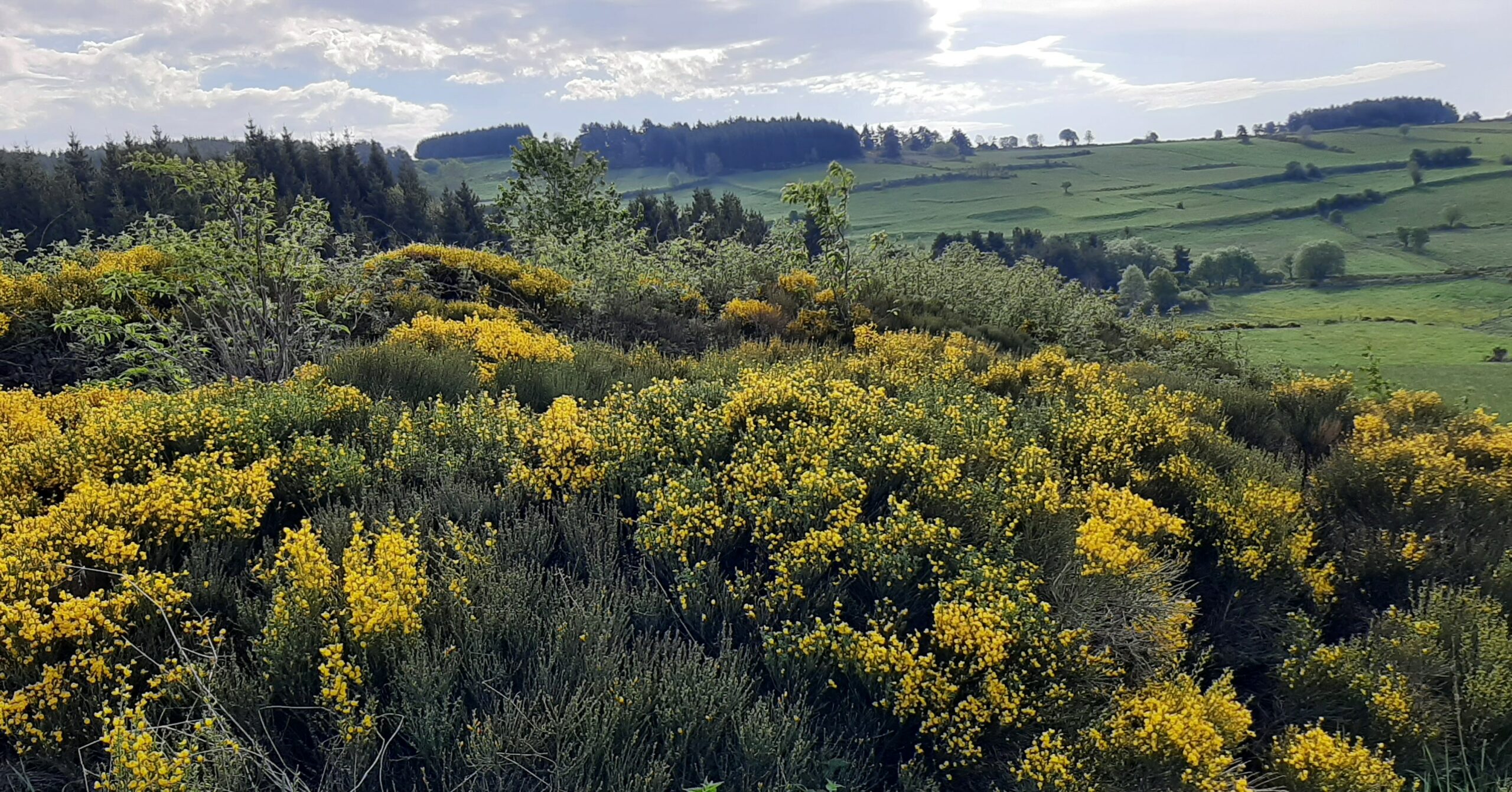[May 2022] – I was delighted to take part, along with other 35 volunteers, in a survey of the Montagu’s harrier in the Haute-Loire (Auvergne region) which was organized over three Saturdays in May.
The LPO (League Protection des Oiseaux) is particularly active in France in this delicate nesting phase, trying to help every precious pair of highly endangered Circus pygargus that has arrived from Africa to successfully reproduce before it is time for them to fly back to Africa in late August-September.
The local network ‘Reseau Busards 43’ and the intervening volunteers contributed to identify the birds of prey that have chosen artificial prairies (like ray-grass) to nest, which are in particular danger: it is in fact a race against the clock to find them as well as the nests before the mowing takes place, which is often done by the farmers too soon for the birds to even lay their eggs. If this happens the birds must abandon the place and try to settle again elsewhere, on another plot of land.
Our participation has helped identify a minimum of 25 pairs – 9 in the Langeac plain and 16 on the Devès plateau and near Alleyrac. These are exceptionally beautiful areas, of green hills dotted with farms and quiet villages, just a few kilometres from Puy-en-Velay, the starting point of the St Jacques de Compostelle route. (photo by Silvana Olivo below)

It is a region particularly rich in birds of prey, as the coordinator of our survey team, LPO’s Francis Magnard explained; in Auvergne one can even find the rare black-winged kite (Elanus caeruleus), recently found to be expanding its distribution in France, originally arriving mostly from Spain. But also many peregrin falcons can be spotted, as well as many red kites (Milvus milvus), a species that has in this region its greatest concentration in Europe (photo by Steve Nagari below).
The OP (observation post) that Francis has chosen today, a mound of dried manure amongst many striking bushes of yellow broom, offers a perfect view of the small valley where he had previously spotted some harriers; two kestrels are very active hunting right above the field where we concentrate our search, displaying their typical hovering technique, holding their position in mid air to ambush the prey until they pounce on it from above. For most of our stay, a few hours, a magnificent brown harrier eagle soars above us, disappearing and reappearing a few times.
![]()
In the distance, on the hills, I see about thirty wind turbines – here as in many other regions, their presence is controversial for bird conservationists, as mortality amongst rare migratory birds increases because of them.
Francis, who is a young and passionate birdwatcher and conservationist, specialised in Environment and Biodiversity Management following a degree at Montpellier University, would like to learn to pilot a drone carrying a thermal imaging camera in order to help protect the Montagu’s harriers even more effectively.
When my son and I finally spot with Francis and the other volunteer, environmental blogger Tess Norel, a female harrier and one, perhaps two, males a little later, it is a very touching moment. The female keeps coming and going from her supposedly chosen patch of land at the bottom of this very quiet and green grassy field, either pausing for long periods of time on the ground or staying perched on a fence pole, and then on another pole, assessing the situation in the field from different angles and waiting for the male (see photo by Steve Nagari below).
She might be waiting for the male to bring her a prey. It is vital during these observations, Francis explains, to interpret the birds’ behaviour in order to understand if they have already built their nest, laid eggs or if they are still busy choosing their territory.
We witness the pair exchanging a prey, and we see them mating briefly. We are told they have arrived later than usual in the season (early May as opposed to April) so this could still be early stages for the birds we’re observing.
![]()
Carried intermittently by the wind, the sound of a rave party in the distance reaches us; ‘it is still going on since last night at some village nearby’, explains Francis, perhaps disturbing the harriers’ activities. A totally unexpected reality for me in such a magic and peaceful countryside…
The report received from the local LPO Group at the end of May, thanking the volunteers for their participation, indicates that the group effort has spotted at least 25 pairs.
The females of Circus pygargus (photo by Maurizio Biancarelli below) lay between 3 and 5 eggs which hatch about a month later; the chicks then leave the nest about three weeks later. As we know (see our update of January 2022), the Auvergne-Rhone-Alpes region is one of the most important in France and Europe for the reproduction of the species: thanks to the LPO, between 200 and 450 birds are saved each year in this area alone.
![]()
The continued effort is crucial for the species.
I was eager to witness it in the field, since The Wild Charm Factory chooses to devolve 5% of all sales (both from the shop and from any future event organised in France) to this project. Our Silver Hawk Wing cuff and ring (see The Wild Charm) have been designed with Desert Diamonds to celebrate the Montagu’s Harrier.
Thank you for your support 🦅
![]()